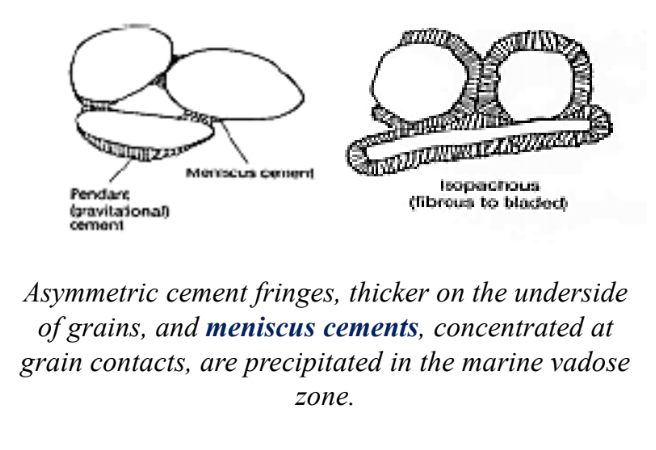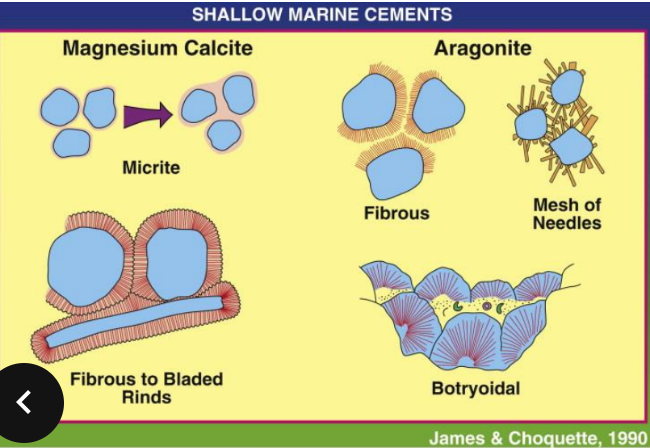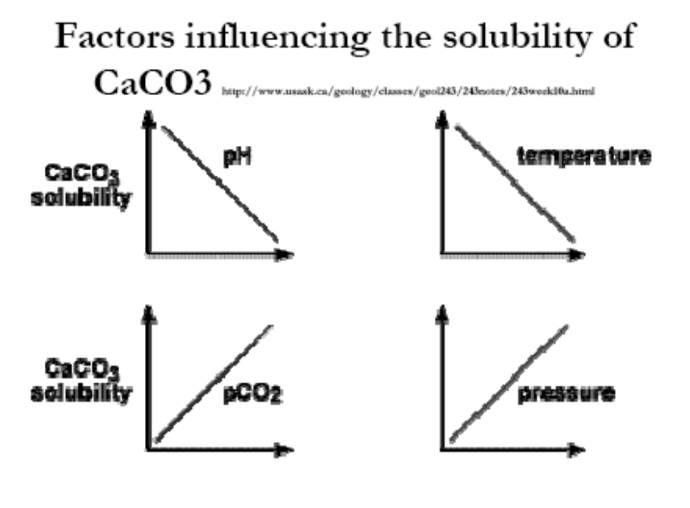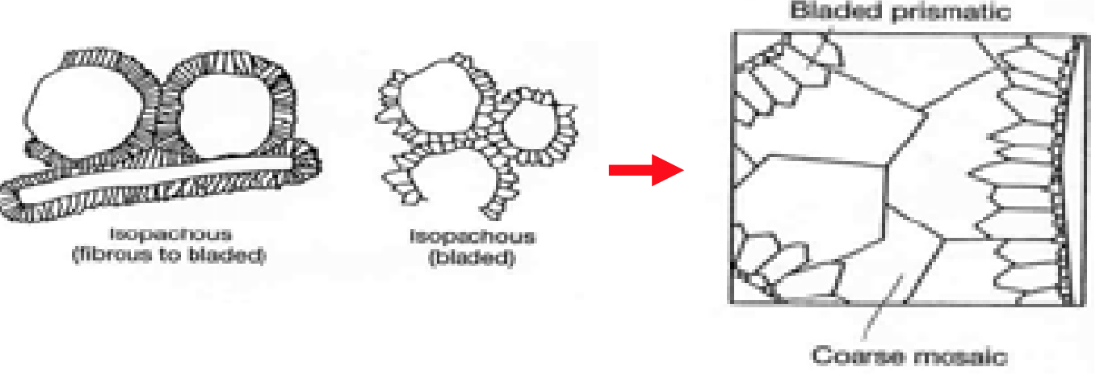Lec 9 - carbonate diagenesis
1/37
There's no tags or description
Looks like no tags are added yet.
Name | Mastery | Learn | Test | Matching | Spaced |
|---|
No study sessions yet.
38 Terms
what are the 6 major processes for carbonate diagenesis
Cementation, microbial micritization, neomorphism, disolution, compaction, dolomitization
What is cementation
Major diagenetic process that depends on the water chemistry. PCO2 and Mg/Ca ratio and carbonate supply rate
microbial micritization
formation of micrite envelopes around bioclasts and completely micritized grains
What is neomorphism
replacement and recrystallization processes where there may have been a change in mineralogy
what are the two types of neomorphism
aggrading neomorphism and calcitization
what is aggrading neomorphism
coarsening of crystal sizes in a lime mud (micrite)
what is calcitization
replacement of aragonite shells and cements by calcite
what is dissolution
the replacement of aragonite shells and cements by calcite (produces secondary porosity)
Compaction
close packing as a result of burial
What is Dolomitization
CaMg(CO3)2 precipitated in near surface and burial environments
3 major diagenetic environments
near-surface meteoric
marine
burial
near-surface meteoric
Diagenesis caused by rain or ground water. Occur when shoreline progrades, sea level fall, or limestone is uplifted
Marine diagenesis
diagenesis takes place on seafloor in both shallow and deep water in the intertidal-supratidal zone
Burial
tens to hundreds of meters down to several km where metamorphic dehydration reactions and recrystallization takes over.
what is intertidal-supratidal diagenesis
cementation in intertidal produces beach rock, most common in tropics and subtropics
where does beach rock formation take place
a few tens of cm below the surface of the beach
what type of cements form in intertidal-supratidal diagenesis
aragonite and/or high Mg calcite.
Aragonite occurs as fringes from 10-200 microns thick of acicular crystals oriented normal to the grain.

where does Shallow subtidal cementation occur
occurs in low latitude shallow marine areas
what processes are involved in shallow subtidal cementation
cementation, in high energy areas
microbial micritization, more common in quieter water
what happens in stagnant environments during shallow subtidal cementation
cementation is restricted to intraskeletal cavities such as within gastropods.

How does Aragonite manifest in marine cements
mostly as acicular fringes and needle meshwork, but botryoid is also common

how does High Mg calcite occur
occurs as bladed cements, 20-100 microns long and <10 microns wide. Forms isopachous fringes
where does significant marine carbonate dissolution occur?
shallow seafloor in higher latitudes where seawater is undersaturated with CaCO3

describe the relationship between saturation and temperature for CaCO3
saturation state of CaCO3 decreases with decreasing temperature
Properties of marine cement in limestones
first-generation cement
may form isopachous fringes around grains or cavity walls
fibrous
non-ferroan and non-luminescent
succeeded by clear calcite spar

How commonly are original aragonite cements preserved in ancient limestones?
Very rarely preserved - most are altered to calcite during diagenesis.
Describe the shape of calcite crystals replacing aragonite cements.
Irregular to equant often cutting across the original acicular aragonite pattern
What occurs during meteoric diagenesis
carbonate dissolution
cementation
formation of soils
what is calcite spar
cement that occupies majority of original pore space in limestone. Clear equant calcite
features of Sparite
located between grains
clear with few inclusions
drusy fabric
preferred growth direction
presence of planar intercrystalline boundaryes
what cement is typical for near-surface meteoric diagenesis
drusy sparite
For drusy sparite to form what are the 3 possible sources of CaCO3
pore water
pressure dissolution
dissolution of CaCO3 from skeletal aragonite
Types of aggrading neomorphism
microspar: pseudospar formation from micrite
calcitization: of originally aragonitic skeletons, ooids, and cement
Chemical compaction
result of increased solubility at grain contacts and along sediment interfaces under an applied stress
what are 3 common textures that result from chemical compaction
fitted fabrics, stylolites, and pressure-dissolution seams
mechanism for dolomitization - direct precipitation
seawater saturated

mechanism for dolomitization - replacement
one-to-one exchange

Dolomitizing fluids
fluids provide the neede input without needing to remove anything
